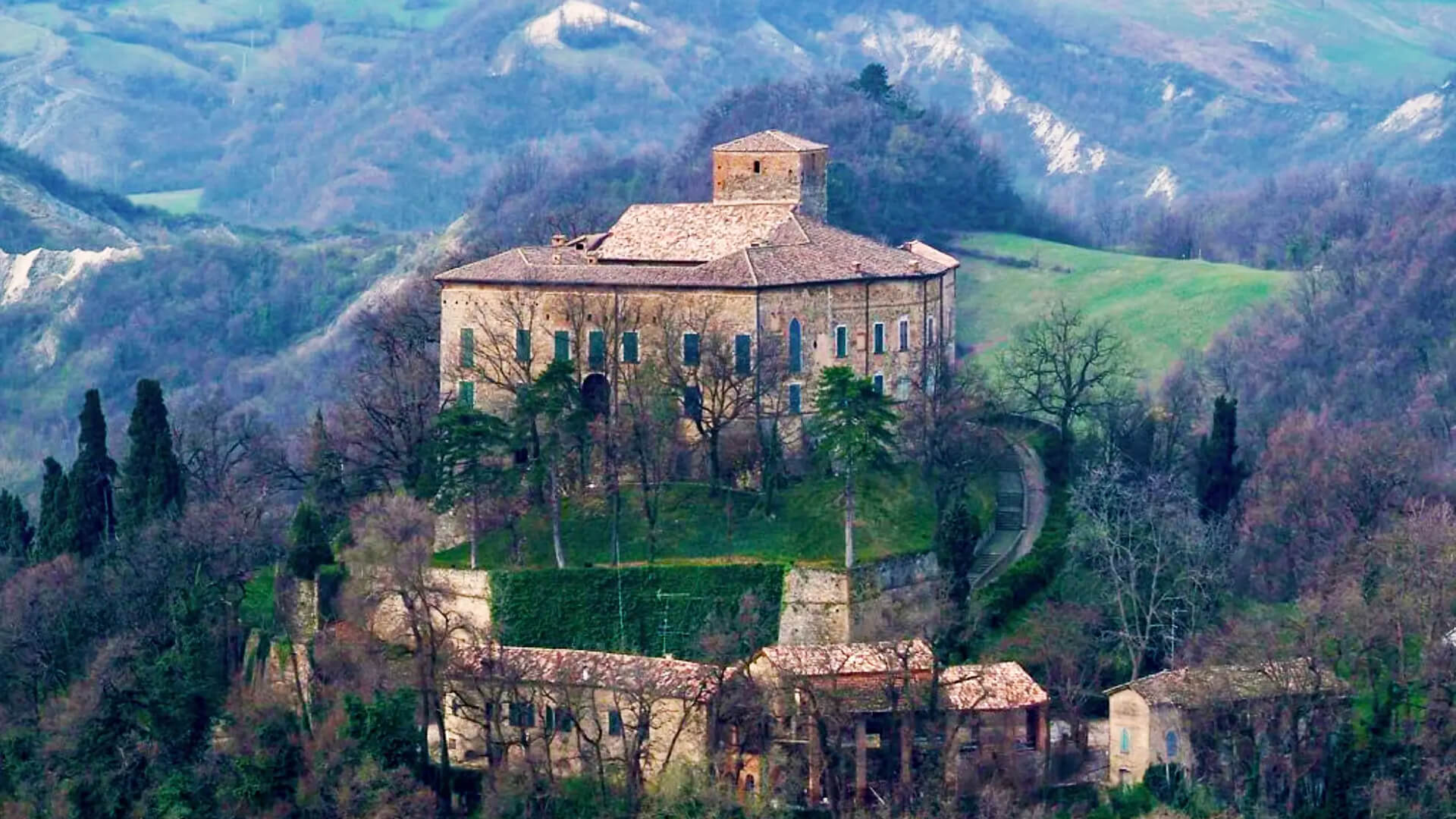
In the Medieval era, from the first hilly area of the province of Reggio Emilia, the events of one of the most influential women of the time were witnessed: Matilda of Canossa, whose tomb “Honor and Glory of Italy,” commissioned by Gian Lorenzo Bernini, is now housed in St. Peter’s in the Vatican.
This itinerary offers the opportunity to visit the places, or rather the castles, that hosted the actions of the Grand Countess and at the same time the chance to immerse oneself in the suggestive landscapes that act as a watershed between the Po Valley and the Apennines.
STAGES OF THE ITINERARY: Castello di Bianello – Castello di Rossena and Torre della Rossanella – Castello di Canossa – Castello di Sarzano – Castello di Carpineti
TRAVEL TIME: 2 hours by car (without breaks)
DISTANCE: 70 km
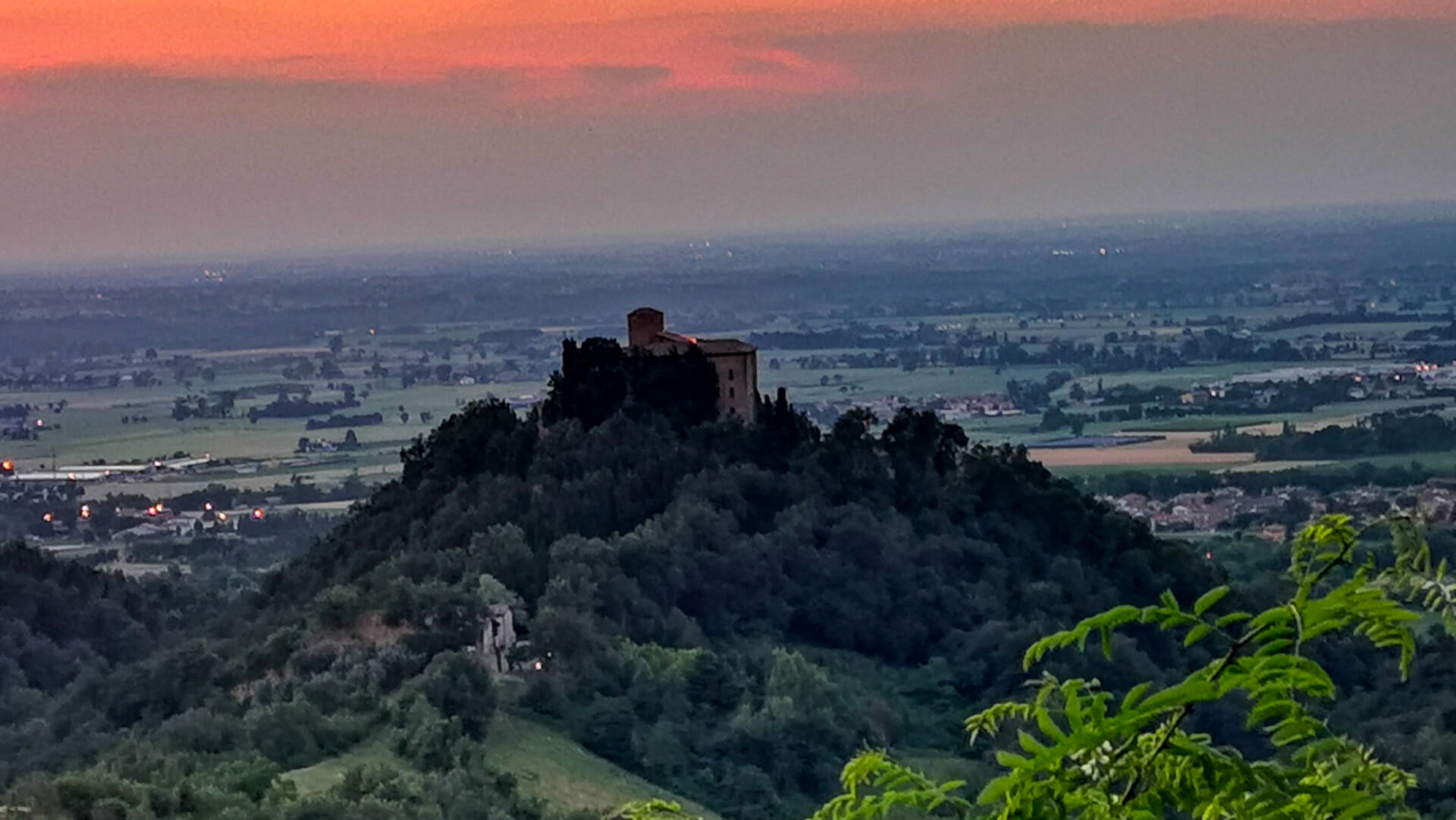
1) CASTELLO DI BIANELLO:
The castle is located in the village of Quattro Castella, heralded by the famous four hills (Monte Vetro, Bianello, Lucio, and Zane) that stand on the left with their characteristic profile. Between 985 and 1054, these were natural and fortified outposts to defend the more remote Canossa. Except for Bianello, few ruins of the others remain. In front of the church of S. Antonio, a long tree-lined avenue leads to the castle, at the entrance of which a plaque recalls “Castrum Bibianelli, the gentle work of Matilda.” Here, Pope Gregory VII and the emperors Henry IV and Henry V were welcomed. Transformed between the 17th and 18th centuries into a noble residence, it still maintains the structure of the original fortified layout.
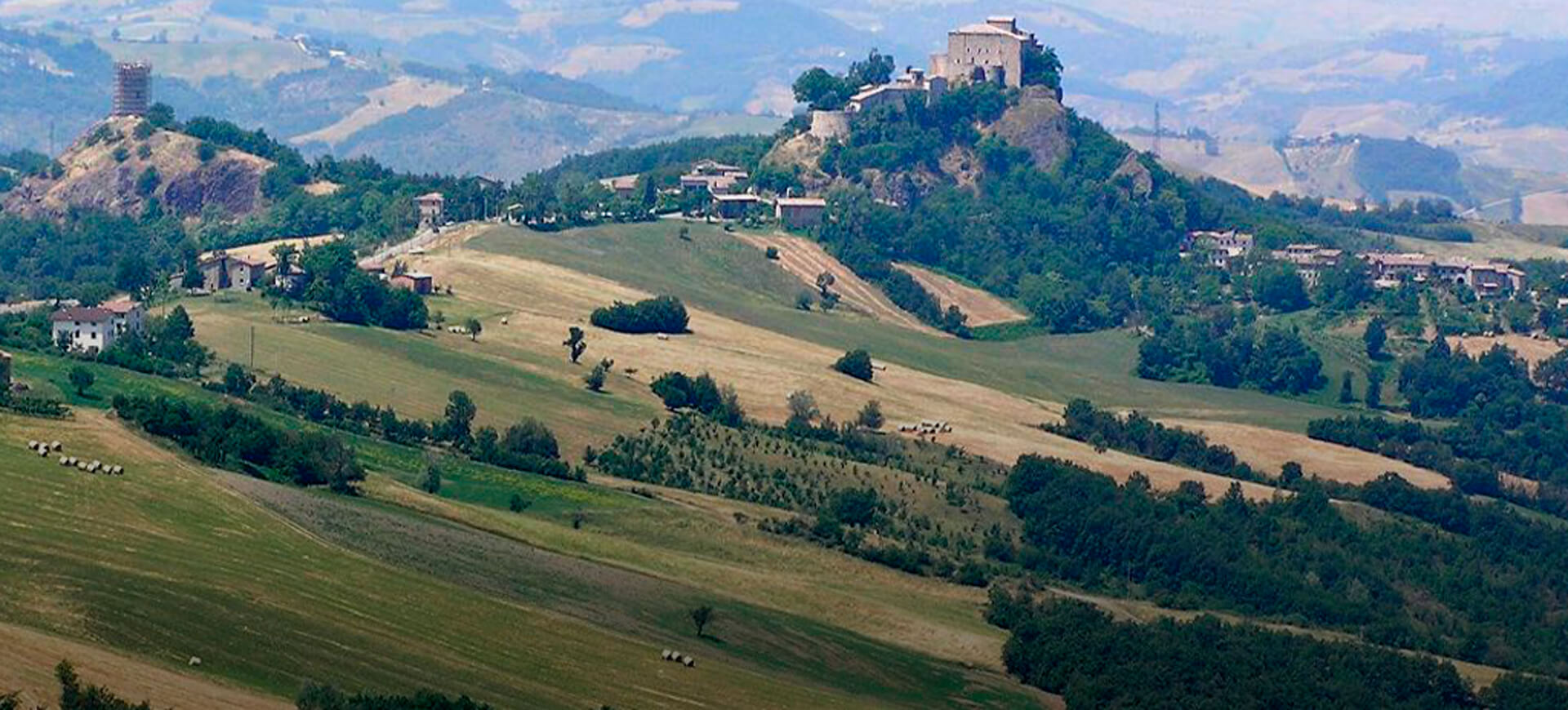
2) CASTELLO DI ROSSENA:
Rossena Castle is the best-preserved among the Matildic castles, located on a volcanic rock and facing the watchtower called Rossanella, perched on the overhanging cliffs above the large Campotrera quarries. Its structure seamlessly integrates with the morphology of the terrain, featuring high walls and bastions, with the central tower dating back to the medieval period. In the 11th century, the fortress belonged to Boniface of Canossa and over the years passed first to the Da Correggio family and finally to the Duchy of Parma, functioning as an enclave in the Reggio territory. Today, it serves as the headquarters of the Higher Institute of Matildic Studies.
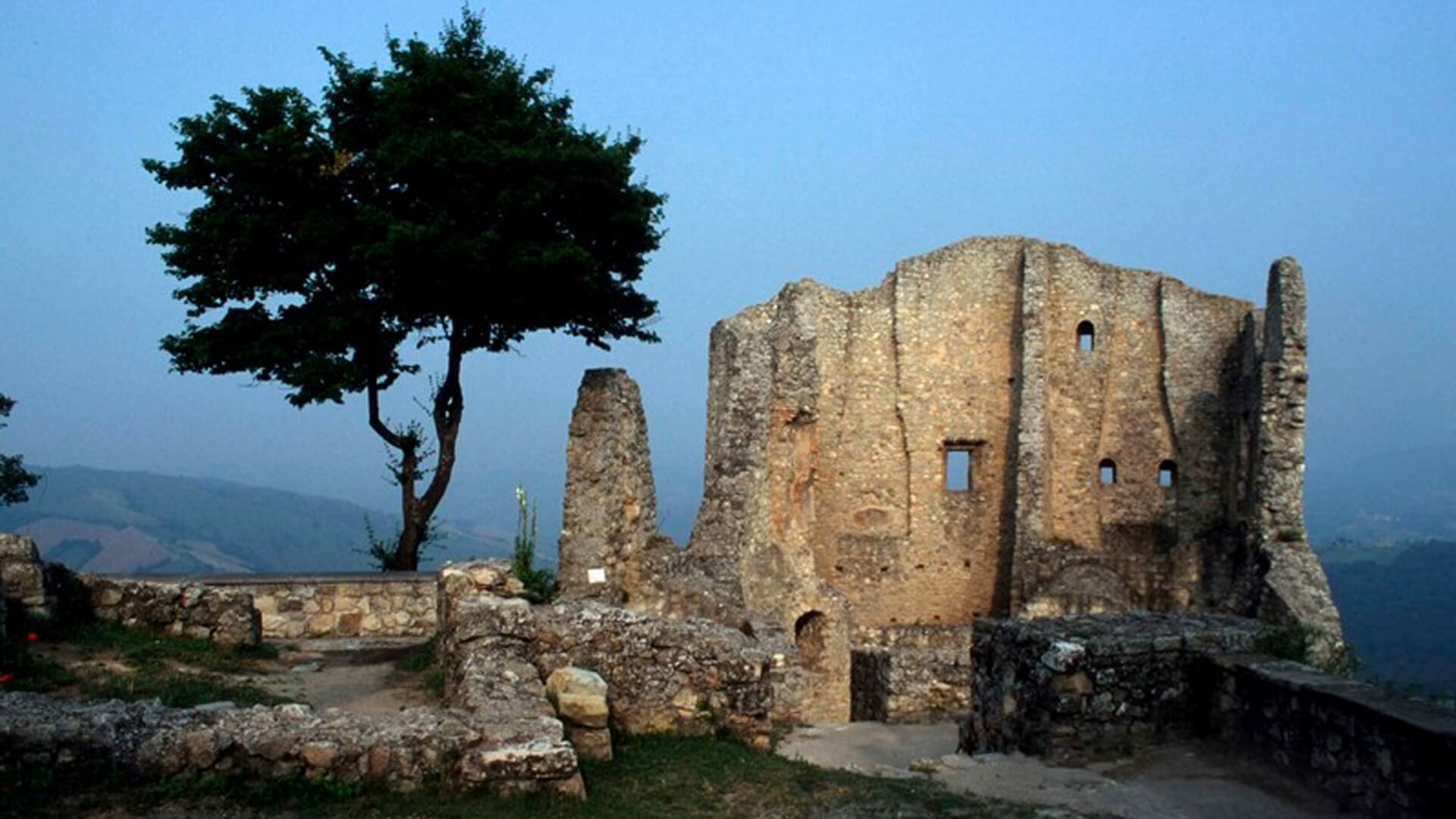
3) CASTELLO DI CANOSSA:
Nestled among the gentle lines of the surrounding hills, a white sandstone cliff emerges from an amphitheater of eroded terrain, topped by the ruins of the castle—a backdrop to the events of the Canossa family and one of the most important episodes in European medieval history: the historic meeting in 1077 between Pope Gregory VII and Emperor Henry IV, in the presence of Countess Matilda and Abbot Hugh of Cluny. From a well-known event that took place in these circumstances, the common saying “go to Canossa” originated, meaning to “humble oneself, admit to being wrong, make an act of submission.” The castle, built around 940 in an excellent strategic position, constituted the center of a complex defensive system controlling the Apennine valleys and the plain. Destroyed and rebuilt several times, today only a few ruins remain, but the view from the top of the ancient fortress is truly priceless.
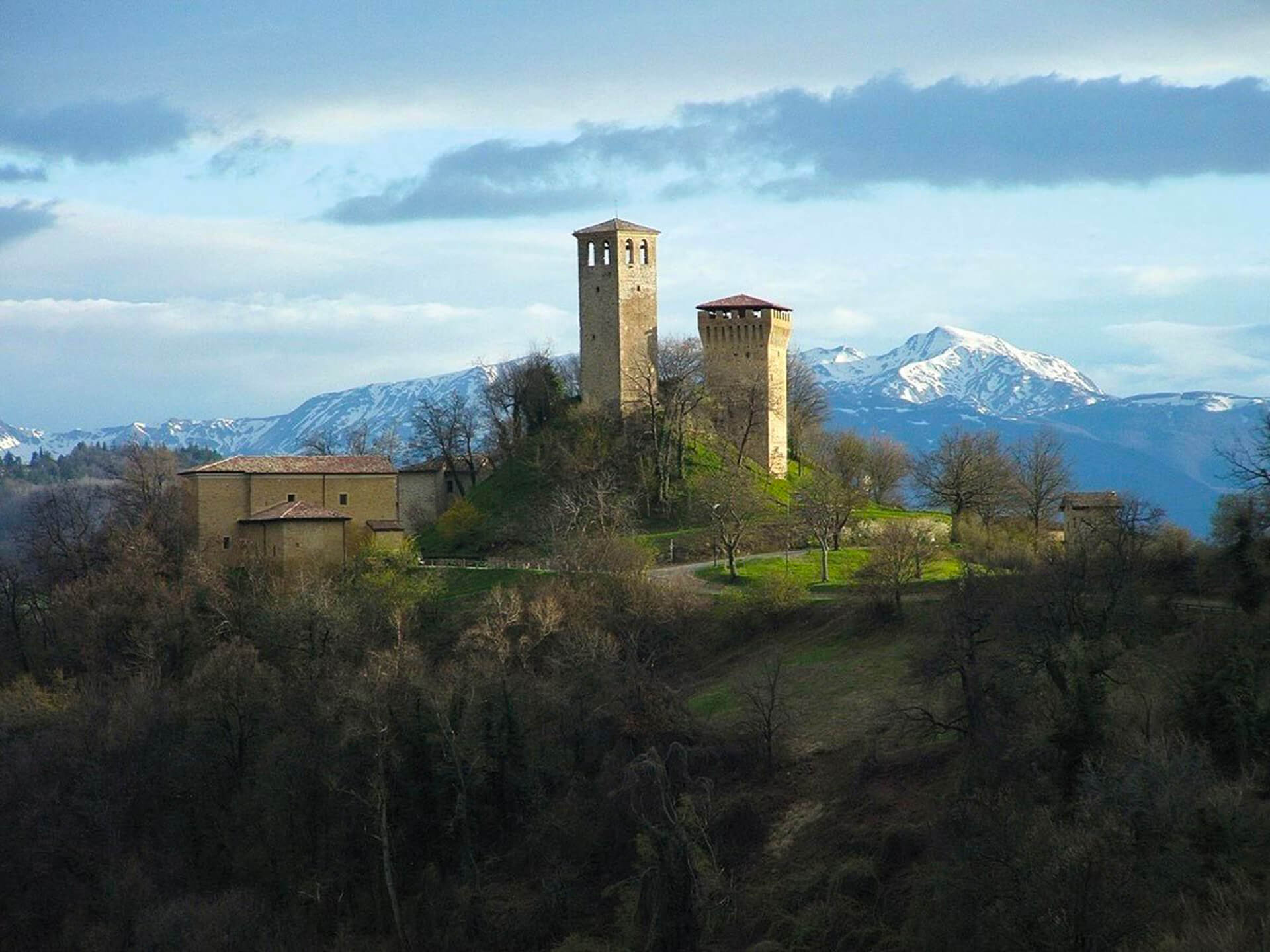
4) CASTELLO DI SARZANO:
Amid scattered villages, isolated parish churches, alternating woods and crops, and small hilly ridges lies Casina, a medium mountain resort. High on the hill, almost observing and protecting the village, the Castle of Sarzano was erected, another pivot of the Canossa defensive system. Today, you can admire the Tower of the Cassero, from whose top you have the opportunity to admire the extensive and varied surrounding landscape, the gate with the drawbridge, and the keep with slits for defense and Guelph battlements. Next to the recently restored church, a comfortable inn has been built adjacent to an excellent restaurant. In Casina, there are numerous archaeological sites such as Cernaieto, Pianzo (Celtic tombs), Cortogno (Roman furnace), Faieto (Bronze Age necropolis), and Monte Venéra.
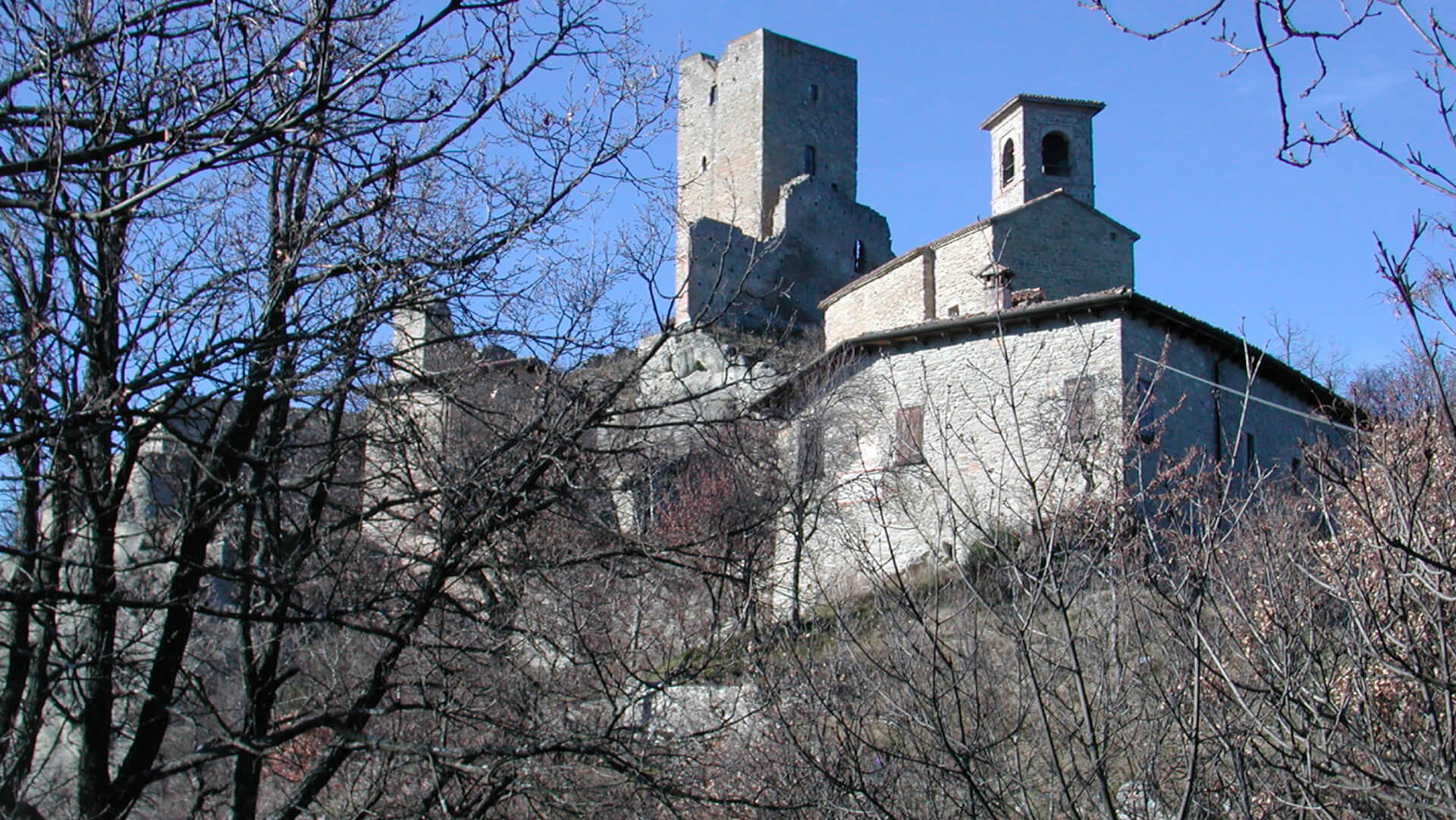
5) CASTLE OF CARPINETI:
The town of Carpineti, from the medieval period, ties its historical events to the overlooking Castle of Carpineti. This was one of Matilde’s favorite residences, a venue for conferences and meetings, including the very important one in September 1092 with prelates, bishops, and feudal lords, to decide whether to continue the war against Emperor Henry IV. The castle is in a panoramic position between the valleys of Secchia and Tresinaro, with extensive views of the Reggio Emilia and Modena Apennines. You can access the walls with the main buildings and the adjacent church of San Andrea, in Romanesque style. From the saddle of the pass dominated by the Castle of Carpineti, a short walk along the ridge leads to the Pieve di San Vitale, of Byzantine origin, in a small and isolated valley.